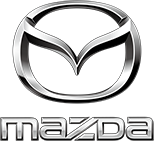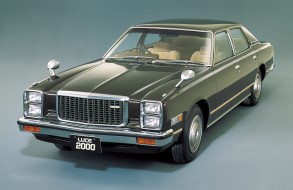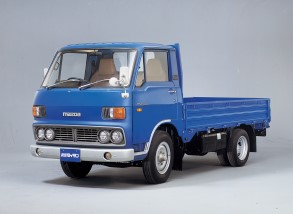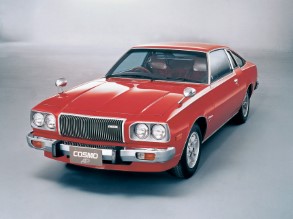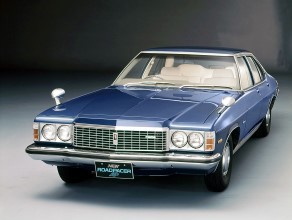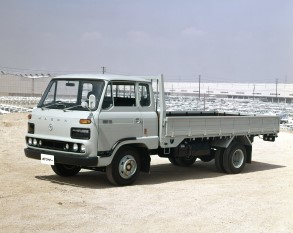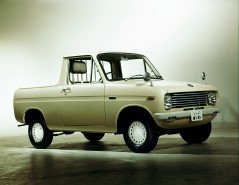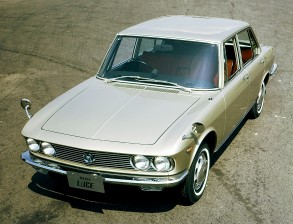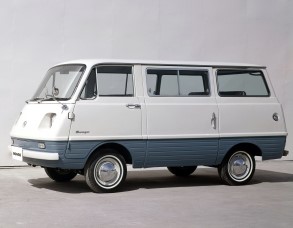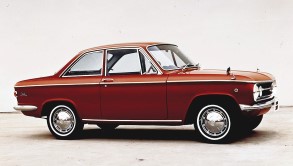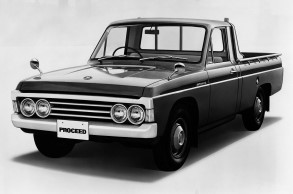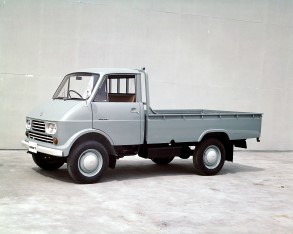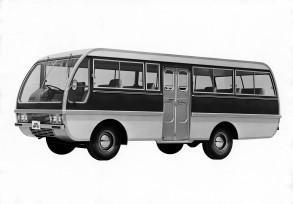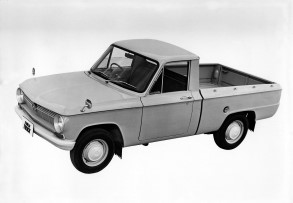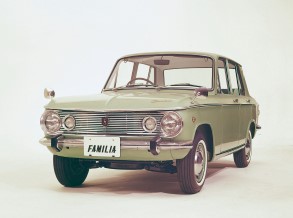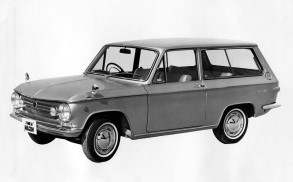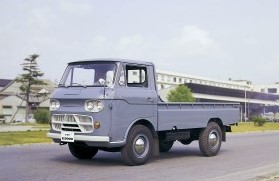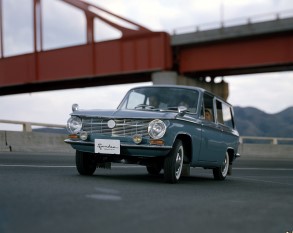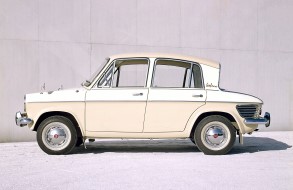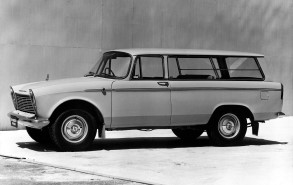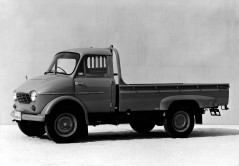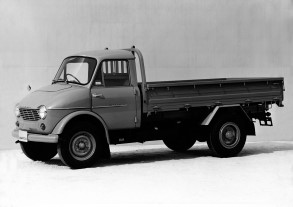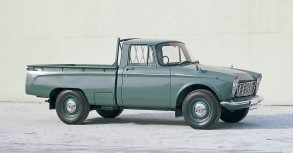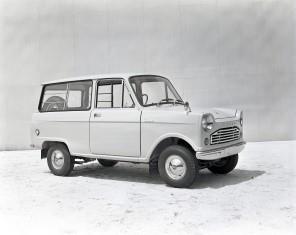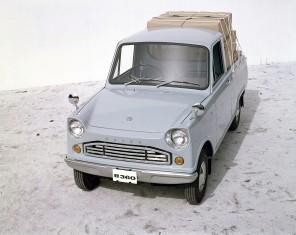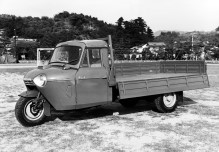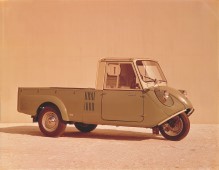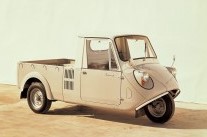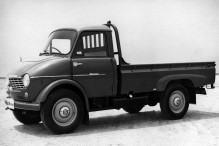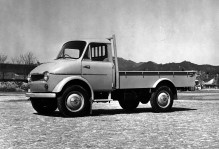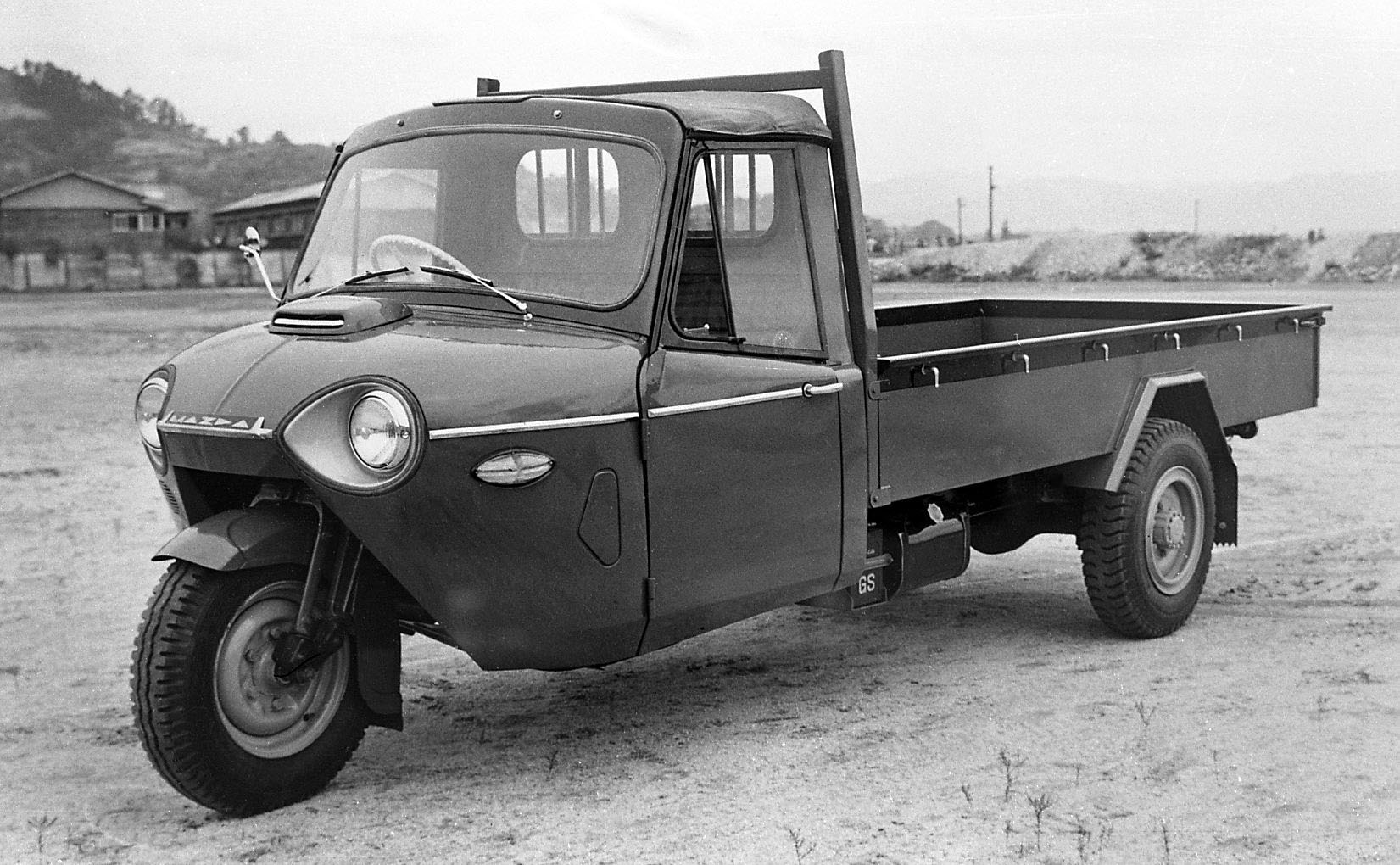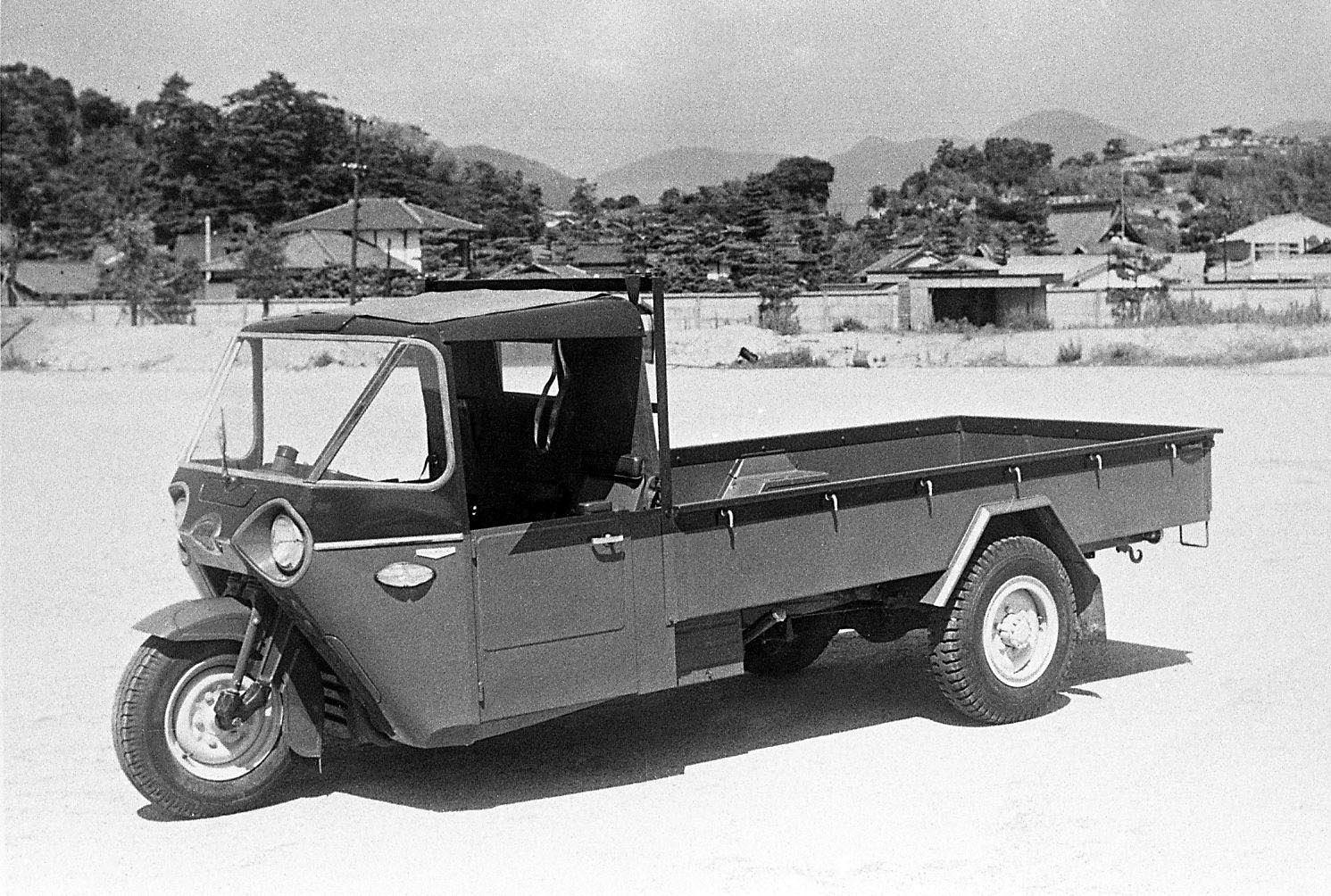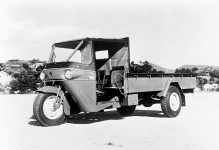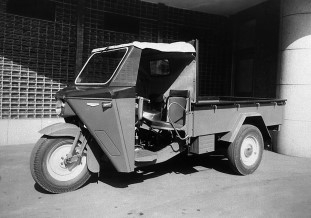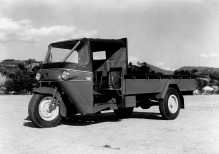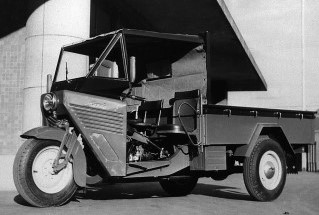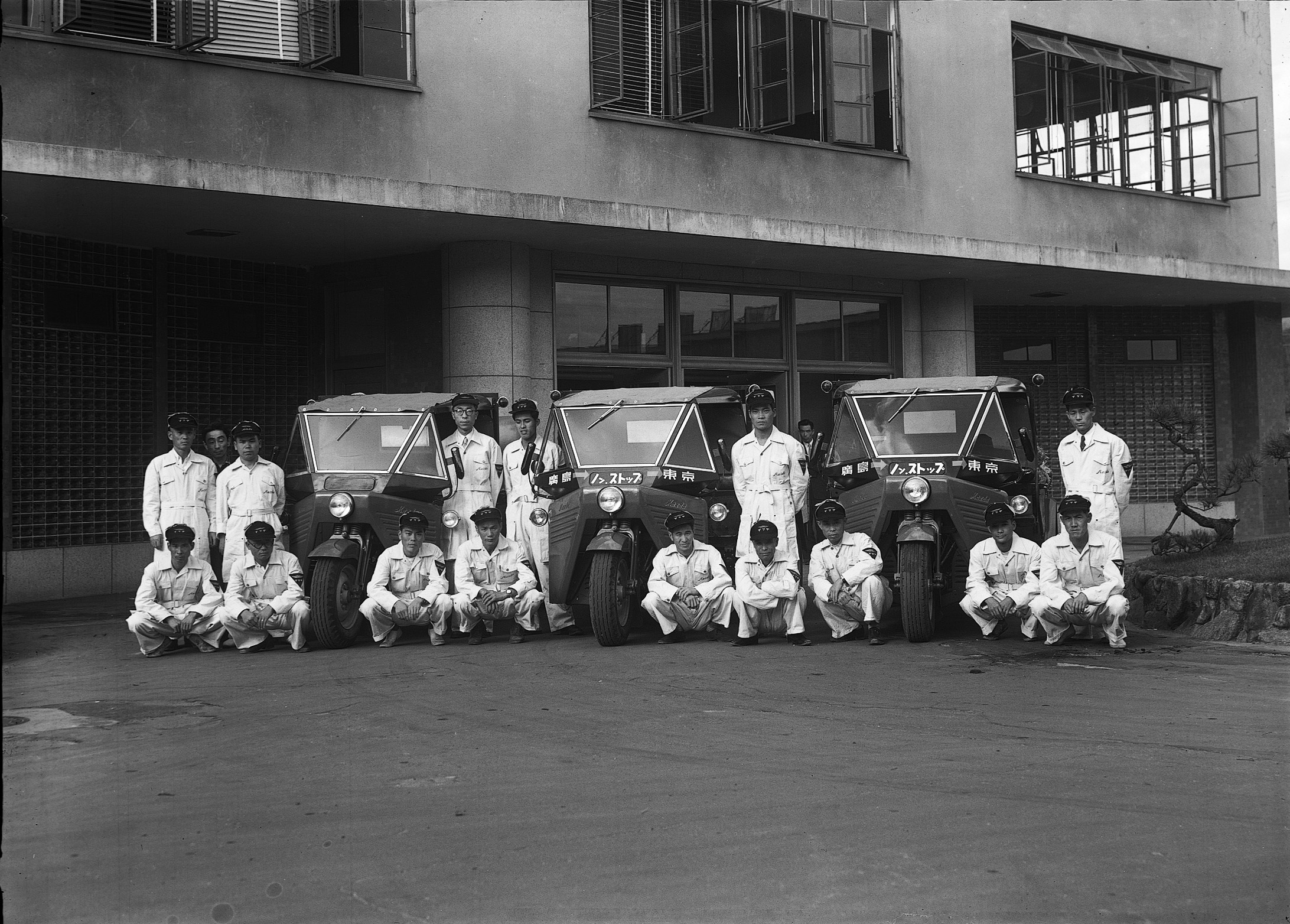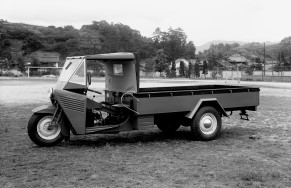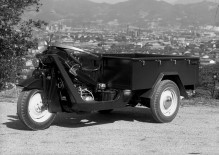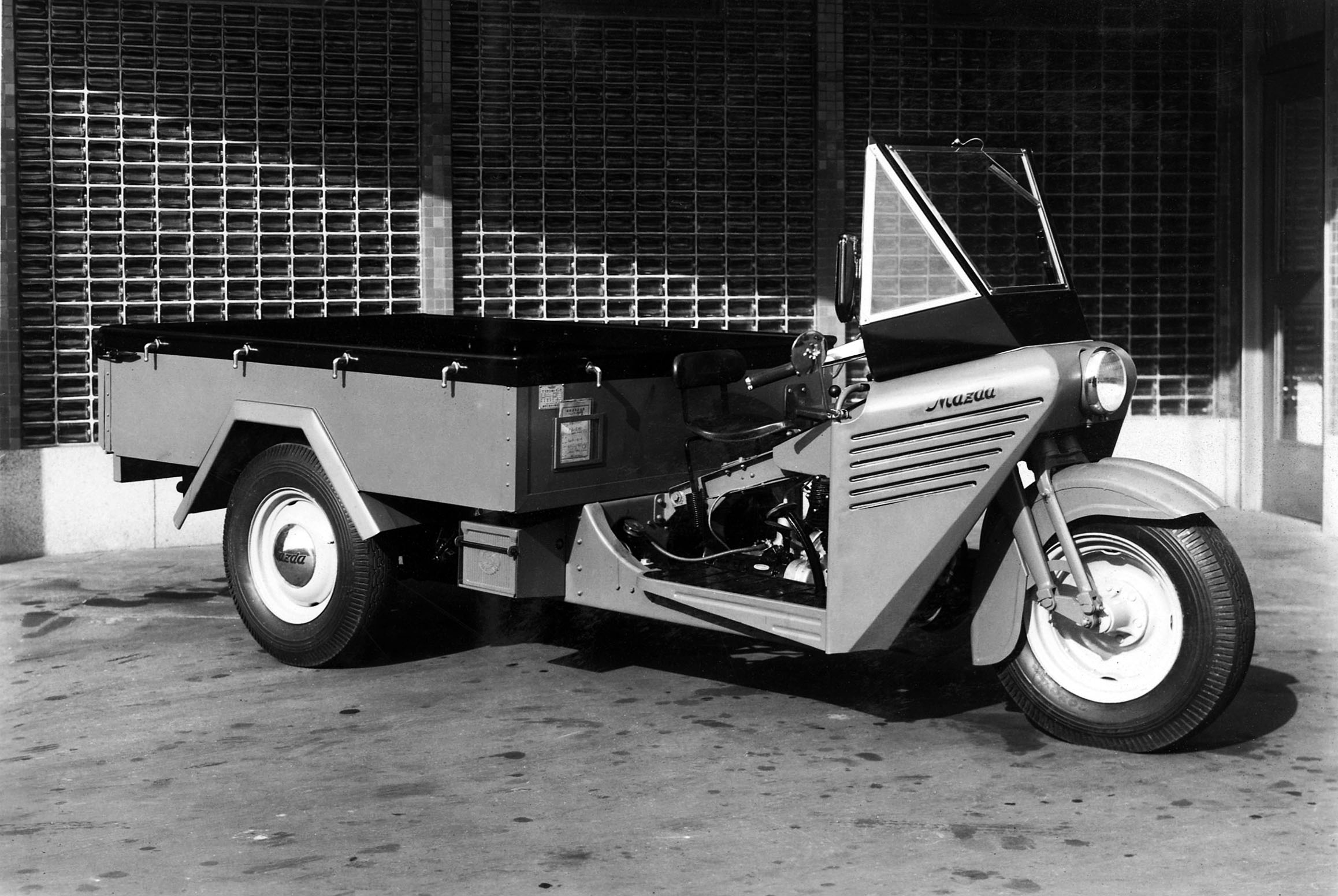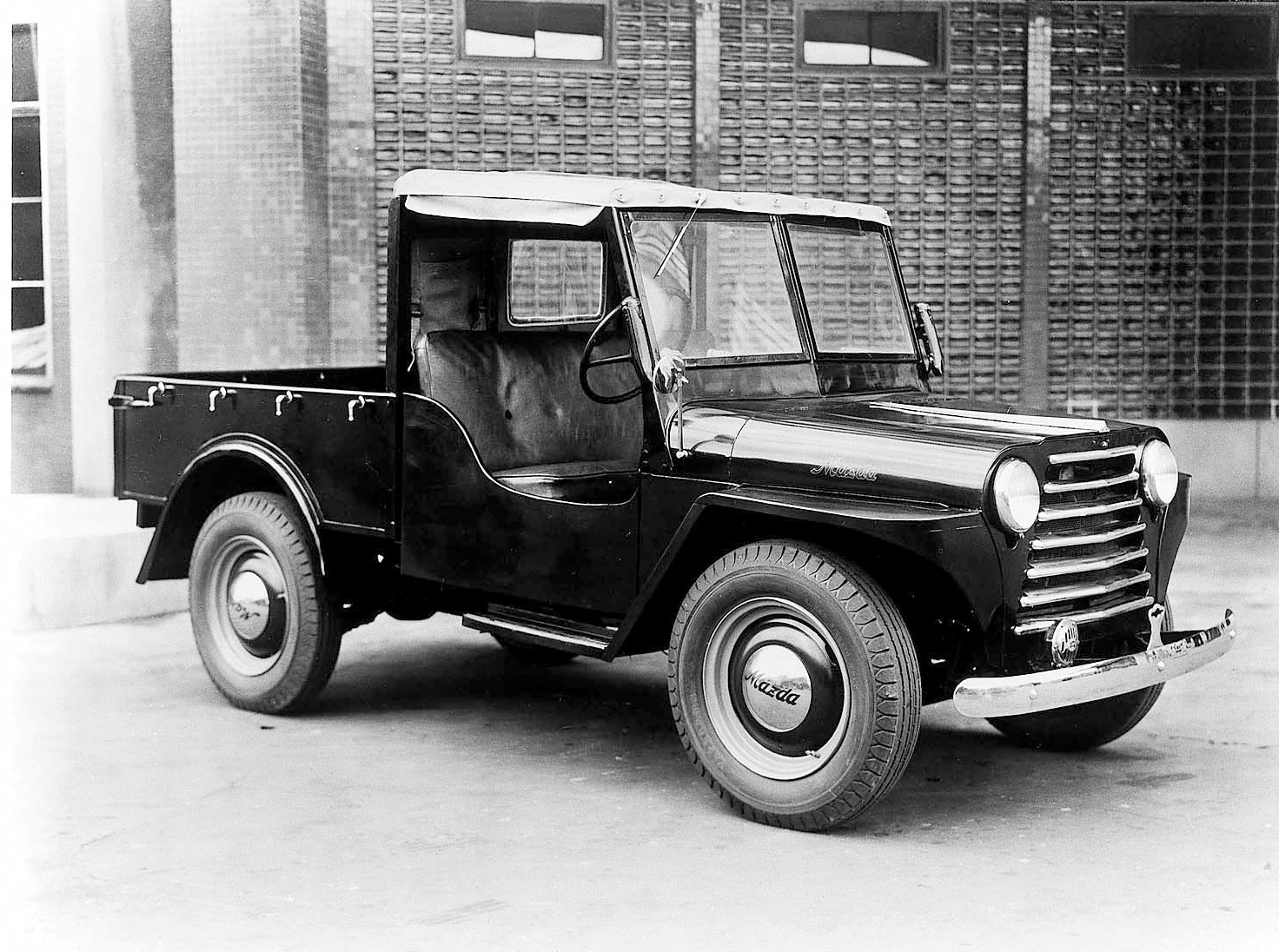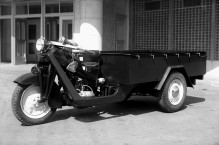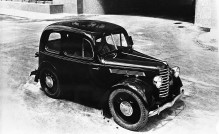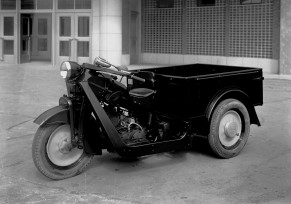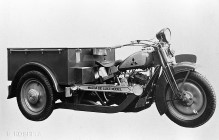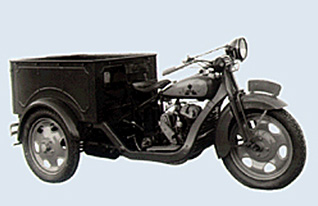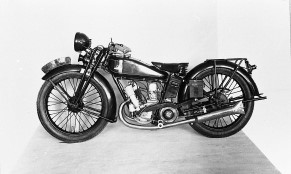History(1920~1979)
1970-
| Corporate History | Product History |
1979/11·Ford Motor Company and Mazda enter into a capital tie-up |
|
1979/06·Cumulative production reaches 10 million vehicles |
|
1979/02·Cumulative exports to North America reach 1 million vehicles |
|
1979/01·New company symbol is adopted |
|
1978/11·Cumulative production of rotry engine models reaches 1 million |
|
1978/10·Introduces Capella(Mazda 626)(3rd generation model)
|
|
1978/03·Introduces Savanna RX-7 (RX-7) (1st generation model)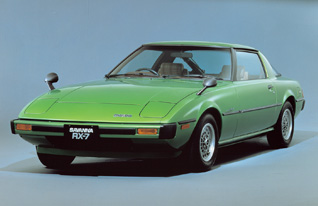 The Savanna RX-7 was developed under the simple theme of "pursuit of driving pleasure." Its 12A two-rotor rotary engine (130 hp) was mounted in a front-midship layout that enabled the RX-7 to exhibit outstanding handling stability. The Savanna RX-7 was the only Japanese car at the time to feature popup headlights, which reduced air resistance. It came in a range of five exterior body colors and featured a T-shaped instrument panel, a large, highly-visible three-ring meter cluster and bucket seats. Measuring 4,285mm (overall length) x 1,675mm (overall width) x 1,260mm (overall height), it had room for four occupants and managed a turning circle of 4.8 meters. The five-speed manual transmission model recorded a quarter mile (400m) time of 15.8 seconds and a top speed of 180km/h. The price range included 1,230,000 yen for the Custom model, 1,370,000 yen for the Super Custom, 1,440,000 yen for the GT, and 1,690,000 yen for the Limited grade (an automatic transmission cost an extra 40,000 yen). |
|
1977/12·Kouhei Matsuda becomes chairman and Yoshiki Yamasaki takes over as president |
|
1977/10·Introduces Luce Legato(Mazda 929L)(3rd generation model)
|
|
1977/05·Introduces Titan(E2000/2500/2700/3000)(2nd generation model)
|
|
1977/01·Introduces Familia (Original GLC/323)(4th generation model)
|
|
1975/10·Introduces Mazda Cosmo<Mazda RX-5/Cosmo(RE), Mazda121/121L(CE)>
|
|
1975/04·Introduces Mazda Roadpacer, a rotary-powered passenger car Featuring a13B Rotary engine(654cc×2) and a REAPS-3 exhaust gas treatment system, the Roadpacer was the first standard-sized passenger vehicle to meet 1975 emission regulations in Japan. Two seating arrangements were available: a 6-seat type with a front bench seat and 5-seat type with bucket seats. From Octber of the same year, it featured a REAPS-5 treatment system to comply with 1976 regulations.
|
|
1975/01·Begins local production in Thailand |
|
1974/05·Completes Miyoshi Diesel Engine Plant |
|
1974/02·Introduces Capella(2nd genertion model)
|
|
1974/01·Begins local production in the Philippines |
|
1973/10·Cumulative export reaches 1 million units |
|
1973/09·Introduces Familia(Mazda1000/1200/1300)(3rd generation model)
|
|
1973/03·Establishes sales company in West Germany |
|
1972/12·Cumulative production reaches 5 million units |
|
1972/11·Introduces Luce<Mazda 929(CE),RX-4(RE)>
RX-4 was first car meeting the stringent Japanese exhaust emission standards for 1975. |
|
1972/10·Completes Mazda Training Center in Taibi |
|
1972/07·Introduces Chantez
|
|
1972/04·Introduces Parkway(1st generation model)
|
|
1971/12·Begins supplying the Courier (Proceed) to Ford |
|
1971/09·Introduces Savanna(RX-3)
·Introduces Grand Familia(Mazda 808/818,Mizer)
|
|
1971/08·Introduces Titan (E2000/2500/2700/3000)(1st generation model)
|
|
1971/02·Establishes Mazda Motor of America (MMA)·Begins local production in Indonesia |
|
1970/11·Kouhei Matsuda becomes president |
|
1970/05· Introduces Capella <RX-2/R612(RE), Mazda 616/618(CE)>(1st generation model)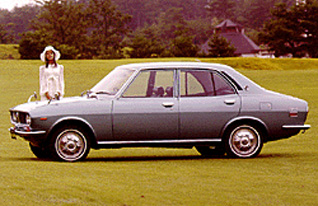 Mazda developed the Capella as a sporty saloon to fill the gap in its lineup between the Familia and the Luce. There were two body types, a two-door coupe and a four-door sedan, and two engines, a two-rotor 12A rotary engine (120 horsepower) and a 1,600cc reciprocating engine (100 horsepower). The Capella quickly became popular and earned the nickname, "Kaze no Capella" or "Capella, the Wind," thanks to its 190km/h top speed. In October 1970, the lineup was expanded with a smaller displacement 1,500cc reciprocating engine (92 horsepower), and in January 1971, the Capella became the first rotary-engined vehicle to be offered with an automatic transmission (REmatic). The range was further expanded with a dedicated sport model, the Coupe GS, in February. The ride height of the Coupe GS was 40mm lower than the standard versions, which helped the Capella Coupe GS to take the fight to the mighty Skyline GT-R on the racetracks of Japan. |
|
1970/06·Begines export of rotary engine vehicles to the USA |
|
1970/04·Exports to the U.S. begin |
|
1970/03·Familia cumulative production reaches 1 million vehicles |
|
1970/01・Estabrishes U.S. sales office, Mazda Motors of America, in the state of Washington |
1960-
| Corporate History | Product History |
1969/10·Ford, Nissan and Mazda agree to establish Japan Automatic Transmission Company (JATCO) |
1969/10·Introduces Luce rotary coupe (Mazda R130 Coupe)
Featuring a two-rotor (655 cc x 2) 13A rotary engine, this was the first front-engine, front-wheel drive passenger car in Japan.
·Introduces Boxer(E3800/4100)
Boxer mid-sized truck, a 3.5/4-ton truck with a 3783cc 6-cylinder diesel engine |
1969/04·Begins full-scale exports of rotary engine vehicles |
1969/04·Introduces micro-mini Porter Cab (1st generation model)
·Familia Rotary Coupe Wins at the Singapore Grand Prix |
1968/11·Introduces Porter Truck (B360/550/600), Porter Van(B360/550/600)
·This model was equipped with a 4-cylinder 4-cycle aluminum alloy engine, a rigid frameless body and front strut suspension. A head rest and safety belt for the driver's seat came as standard equipment, a first for the segment. |
|
1968/09·Begins local assembly of passenger cars in Malaysia |
|
1968/07·Establishes sales company in Canada |
1968/07.Introduces Familia rotary coupe (R-100 Coupe)
This model was powered by the 10A two-rotor (491cc x 2) rotary engine, boasting maximum torque of 100PS at 7000 rpm (gross). |
1967/11·Introduces Mazda Familia (Mazda 1000/1200/1300)(2nd generation model)
This model featured a 987cc in-line 4-cylinder aluminum alloy engine. It was available as a two-door or a four-door, both of which seated five. |
|
1967/05·Introduces Mazda Cosmo Sports (110S), Mazda's first rotary engine vehicle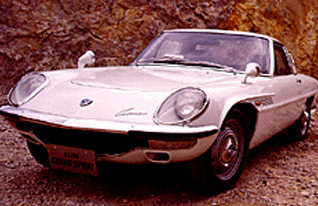 The Cosmo Sport, a two-seat sports car that cost 1,480,000 yen, was powered by a 491cc x 2 two-rotor rotary engine that generated 110 horsepower. It achieved a maximum speed of 185km/h and a quarter mile (400m) time of 16.3 seconds. In the following year, power was upgraded to 128 horsepower, maximum speed to 200km/h, and its quarter mile time to 15.8 seconds. The price of the new version was 1,580,000 yen. |
|
1967/04·Establishes sales company in Australia |
|
1967/03·Full-scale export to the European market starts |
|
1967/01·Introduces E2500 Truck with 2-ton capacity (diesel engine) The diesel engine in this truck was jointly developed with Perkins Engines Co., Ltd. |
|
1966/11·New passenger car plant (Ujina) in Hiroshima is completed |
|
1966/08·Introduces Mazda Luce(Mazda 1500/1800)
|
|
1966/05·Introduces Mazda Bongo(F800/1000 Coach) (1st generation model)
The lineup consisted of an 8-seater coach, route van, van and truck. |
|
1965/11·Introduces Familia Coupe
This sport coupe powered by a 985cc OHC engine |
|
1965/10·Introduces Mazda Proceed (B1500)(1st generation model)
This 1-ton truck was equipped with a 1484cc in-line 4-cylinder gasoline engine and seated three. |
|
1965/06.Introduces Kraft Track
This 1/1.5-ton truck was equipped with a 1484cc in-line 4-cylinder gasoline engine and seated four |
|
1965/05·Miyoshi Proving Ground is completed |
1965/05·Introduces Light bus Engine:1490cc OHC engine Seating capacity: 25
·Introduces a 3.5-ton truck, E2300 |
1965/01·Technical cooperation begins with Perkins Services N.V. (U.K.) on diesel engines |
|
1964/12·Introduces Familia truck (Mazda 800/1000 Pickup) (1st generation model)
|
|
1964/10·Introduces Familia (Mazda 800/1000)(1st generation model)
This model was wquipped with a 800cc water-cooled 4-cylinder aluminum alloy engine that boasted 42PS. A 2-door version was launched in November. |
|
1964/04·Introduces Familia wagon (mazda800)(1st generation model)
|
|
1964/01·Introduces E2000
|
|
1963/10·Introduces Familia van (Mazda 800/1000 Estate) (1st generation model)
This model was equipped with 782cc water-cooled 4-cylinder aluminum alloy engine. |
|
1963/06·Begins local assembly in South Africa |
|
1963/03·Cumulative production reaches 1 million vehicles |
|
1962/11·Introduces Carol 600, first Mazda 4-door passenger car
|
|
1962/09· Introduces to Mazda B1500 van
|
|
1962/04·Introduces D1500/D2000
|
|
1962/02·Introduces Carol 360 micro-mini passenger car
This models was equipped with a water-cooled 358cc 4-cylinder 4-cycle engine and seated four. A 4-door version was launched in September. |
|
1962/01·Begins local assembly in South Korea |
|
1961/08·Introduces Mazda B1500 compact pickup
|
|
1961/07·Enters into technical cooperation with NSU/ Wankel (formerly in West Germany) on rotary engine |
|
1961/05・Introduces B360 Light van (B360 light van)
|
|
1961/02·Introduces B360 Truck (B360 light truck)
|
|
1960/05·Introduces R360 Coupe, first Mazda 2-door passenger car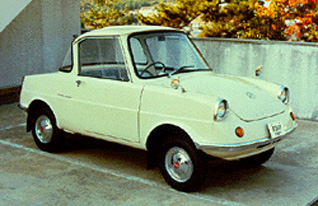 The R360 Coupe had four seats and was powered by a 356cc air-cooled 16-horsepower engine. Thanks to comprehensive weight savings, it achieved fuel economy of 32km/liter. The model range included a version with an automatic transmission. At just 300,000 yen, the R360 Coupe brought the dream of owning a car within the reach of salaried workers, and in December 1960 alone, 4,090 units were bought by eager customers. |
1950-
Corporate HistoryProduct History
| Corporate History | Product History |
1959/10・Introduces T1100/T1500, three-wheel truck
|
|
1959/7・Adopts a new company logo design based on "m" |
|
1959/06・Introduces T600 small three-wheel truck
Engine displacement: 577cc |
|
1959/05・Introduces K360 three-wheel micro-mini truck
Engine displacement: 356cc Load capacity: 300kg |
|
1959/03・Introduces D1100 (1-ton) and D1500 (1.75-tons) four-wheel trucks
|
|
1958/04·Introduces Romper, 4-wheel light truck.
This 1-ton truck was equipped with a 1105cc 2-cylinder OHV engine. |
|
1957/11・Introduces Type-MAR three-wheel truck
This 1-ton model was equipped with a 1005cc engine and a steering wheel. |
|
1957/08・Introduces Type-HBR three-wheel truck This 2-ton truck was equipped with a 1400cc engine and a steering wheel. |
|
1957/01・Cumulative production reaches 200,000 vehicles |
|
1956/08・Introduces Type-GLTB, CMTB and CHTB three-wheel trucks
|
|
1954/10・Fully redesigns all three-wheel truck models |
|
1954/04・Participates in the inaugural Tokyo Motor Show held at Hibiya Park |
1954/04・Introduces Type-CHTA three-wheel truck
This 1/2-ton truck was equipped with a 1400cc 2-cylinder OHV engine. |
1954/02・Introduces Type-GCZ three-wheel truck (Load capacity: 750kg)
|
|
1953/12・Fully redesigns Type-CTA three-wheel truck
・Introduces Type-CLY three-wheel truck (Engine displacement: 905cc Load capacity: 1 ton)
|
|
1952.10・Type-CTL1 three-wheel truck completes 1,000-km non-stop run from Hiroshima to Tokyo (advertising campaign)
|
|
1952/09・Introduces Type-CTL1 and CTL2 three-wheel trucks with 2-ton capacity |
|
1951/12·Jujiro Matsuda becomes chairman and Tsuneji Matsuda takes over as president. |
|
1951/09・Introduces Type-CTL three-wheel truck with 1-ton capacity
|
|
1951/03・Introduces Type-HB three-wheel truck
|
|
1950/09・Introduces Type-CT three-wheel truck with 1-ton capacity
This model was equipped with a 1157cc air-cooled 2-cylinder OHV engine and a laminated safety-glass windshield. |
|
1950/06・Introduces Type-CA small four-wheel truck (Load capacity: 1-ton)
|
|
1950/04・Introduces Tye-PB three-wheel passenger car
Engine capacity: 701cc Seating capacity: 6 |
|
1950/03・Introduces Type-LB three-wheel truck with a long body
|
1940-
| Corporate History | Product History |
1949/08·Exports three-wheel truck Type-GB to India. Exports samples of three-wheel passenger cars that seat four people. |
|
1949/04・Introduces three-wheel truck Type-GB
This model was equipped with a 701cc engine and transmission made from a single aluminum casting |
|
1945/12・Resumes production of three-wheel truck Type-GA
|
|
1945/08·(Atomic bomb dropped on Hiroshima)(End of World War II). ・Lends part of its company building to the Prefecture of Hiroshima, which housed all of its government departments there until July 1946 |
|
1940・Builds prototype of a small passenger car
|
1930-
| Corporate History | Product History |
1939/02・Starts production of 97-type motorcycle with sidecar |
|
1938/05・Introduces three-wheel truck Type-GA (Green Panel)
This model was equipped with a 669cc engine and a four-speed transmission. |
|
1936/04·Caravan of three-wheeled trucks from Kagoshima to Tokyo (advertising campaign).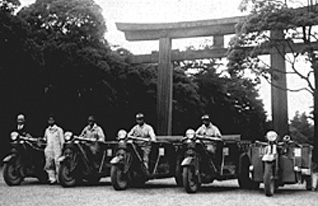 As part of a marketing campaign in 1936, four Mazda-go Type-KC36 trucks and one Mazda-go Type-DC took part in a caravan from Kagoshima to Tokyo. These hardy trucks covered 2,700 kilometers in 25 days, and the event proved so successful that it sparked a boom in similar events. |
|
1935/12・Introduces three-wheel truck Type-KC36 This model with load capacity of 500kg featured a single frame made of a rolled steel plate. |
|
1935/10·Production of rock drills and gauge blocks begins. |
|
1935/06・Introduces three-wheel truck Type-TCS This model featured a double frame with a low floor. |
|
1934/10・Introduces three-wheel truck Type-KA (with a 654cc engine) |
|
1934/01・Starts production of three-wheel truck Type-DC (with a 485cc engine)
|
|
1932·Begins export with 3-wheel trucks for China. |
1932/11・Starts production of three-wheel truck Type-DB This model was equipped with a 482cc engine and a double frame. |
1931/10·Three-wheel truck production starts. This first three-wheel truck Type-DA called Mazda-go (with load capacity of 200kg)
|
|
1930/10・Wins the auto race of Hiroshima's Shokon-sai (memorial service for the war dead) with company-built motorcyles |
|
1930/09·New plant constructed in Hiroshima (Aki-gun, Fuchu-cho).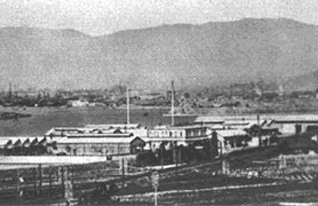 The site where the plant and headquarters were built in Fuchu-cho, near Hiroshima city, was originally a salt farm. |
|
1930/03・Builds 6 prototype motorcycles. Later, produces and sells 30.
|
1920-
| Corporate History | Product History |
1929/11・Builds a prototype 250cc two-stroke engine |
|
1929/04·Manufacturing of Toyo machine tools begins. |
|
1927/09·Company becomes Toyo Kogyo Co., Ltd. |
|
1921/03·Jujiro Matsuda becomes president.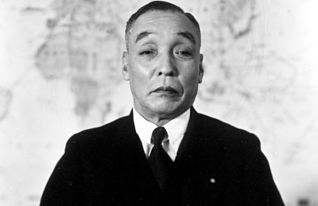 |
|
1920/01/30·Toyo Cork Kogyo Co., Ltd is founded in Hiroshima, Japan. ・Shinhachi Kaizuka becomes president. |
